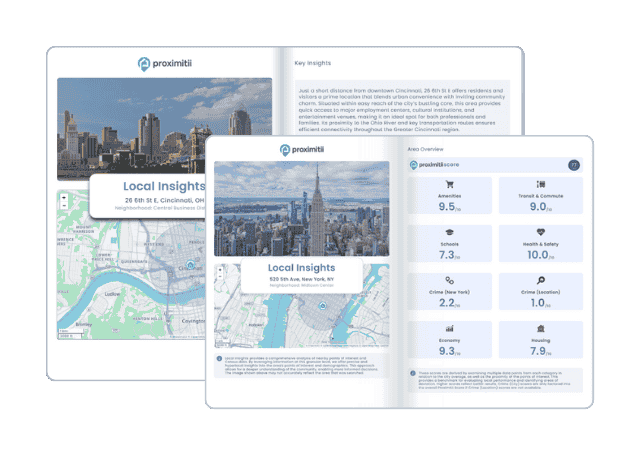| Statistic | Reportedincidents | /100k people | Falls City/100k people | Nebraska/100k people | National/100k people |
| Total crime | 35 | n/a (estimate) | 872 | 1,847 | 2,119 |
| Murder | 0 | n/a | 0.0 | 2.1 | 5.0 |
| Rape | 3 | n/a | 74.7 | 43.5 | 37.5 |
| Robbery | 0 | n/a | 0.0 | 20.5 | 60.6 |
| Assault | 2 | n/a | 49.8 | 154.5 | 256.1 |
| Violent crime | 5 | n/a (estimate) | 125 | 221 | 359 |
| Burglary | 1 | n/a | 24.9 | 155.1 | 229.2 |
| Theft | 22 | n/a | 547.8 | 1,218.9 | 1,272.1 |
| Vehicle theft | 7 | n/a | 174.3 | 252.6 | 258.8 |
| Property crime | 30 | n/a (estimate) | 747 | 1,627 | 1,760 |


Looking at the most recent crime report, the crime rate in Falls City is 54.1% lower than the national average. These crimes fall into two primary categories: violent and property. Violent crimes encompass murder, rape, robbery and assault, while property crimes involve theft, vehicle theft and burglary. In Falls City, there were 7 reported violent crimes, equivalent to 174 per 100,000 individuals, 53.1% lower than the national average. Additionally, there were 36 property crimes, amounting to 893 per 100,000 residents, 54.3% lower than the U.S. average.
In the latest reported crime year, Falls City recorded zero homicides. This statistic potentially positions the city as a paragon of security, radiating a profound sense of safety for its residents. A low number of severe violent crimes instills a deep feeling of well-being among its community but also establishes a lofty benchmark for other locales aspiring to foster equally secure environments.
Is Falls City a safe place to live? While the answer may not be straightforward due to variations in safety levels across the city, gaining an understanding of the overall crime rate can prove to be advantageous. In general, Falls City has a crime rate that is lower than the national average by 54%. Breaking this down on a daily basis, it translates to 0.12 daily incidents, encompassing 0.02 violent crimes and 0.1 property crimes. Evaluating these statistics can aid in forming a more informed perspective on the safety of Falls City as a potential place to call home.
In the most recent crime report, year-over-year crime rates in Falls City has increased by 7.5%. Examining the change in crime rates from one year to the next provides valuable insights into the evolving safety landscape of Falls City, aiding residents in assessing whether it is becoming a safer or more dangerous place to live. These crime rates are categorized into two primary groups: violent and property crimes. Year-over-year, violent crime has didn't change by 0%, while property crime has increased by 9.1%. This comprehensive analysis offers potential residents essential information for making informed decisions about whether or not Falls City is a safe place to live.
Regions characterized by high population density frequently encompass expansive urban hubs that offer diverse economic prospects. In such areas, income inequality can be exacerbated, creating pockets of poverty alongside affluence. Economic disparities within these regions may correlate with elevated property crimes and, in certain instances, violent crimes. Conversely, areas with low population density numbers generally exhibit reduced Falls City crime rates. Falls City registers a population density of 1238.2 people per square mile, in contrast to the national average of 90.6 people per square mile.
The educational level within a community can have an influence on crime rates. Typically, higher levels of education are associated with reduced crime rates, as they offer individuals improved employment prospects and alternatives to engaging in criminal activities. Conversely, lower educational attainment tends to correspond with higher crime rates. In Falls City, 84.8% of residents have achieved at least a high school diploma, which differs from the national average of 83%.
Escalating cost of living expenses, encompassing exorbitant housing costs, grocery and healthcare expenditures, can induce financial strain on individuals and families, particularly those with limited financial resources. Such economic stress may propel individuals towards criminal activities, including theft or burglary, as a means of addressing their financial hardships. Conversely, cities characterized by a lower cost of living may alleviate economic pressures, potentially resulting in a reduced crime rate. In Falls City, the cost of living is 27.31% lower than the national average, reflecting a more affordable economic environment that could contribute to a decrease in crime levels.

Why stop at city-to-city? With Local Insights, you can compare neighborhoods, zip codes, or even exact addresses. Access 300+ hyperlocal data points—from schools and crime to housing and amenities—to see which area is the better fit.

| Item | Falls City | Nebraska | National |
| Law enforcement employees (officers & civilians) | 12 | 2,523 | 558,732 |
| Police officers & civilians /1000 residents | 2.8 | 2.1 | 3.3 |
| State | Total offenders | Nebraska /100K | National /100K |
| Nebraska | 6,070 | 345 | 266 |
| City | Population | Violent crime/100k people | Property crime/100k people | Total crime/100k people |
| Big Lake, MO | 75 | 187 | 784 | 971 |
| Sabetha, KS | 2,550 | 183 | 814 | 996 |
| Rulo, NE | 88 | 196 | 1,446 | 1,641 |
| Hiawatha, KS | 3,119 | 569 | 1,169 | 1,737 |
| Shubert, NE | 192 | 250 | 1,847 | 2,097 |
| Stella, NE | 141 | 282 | 2,083 | 2,365 |
| Barada, NE | 27 | 319 | 2,357 | 2,676 |
| Falls City, NE | 4,139 | 125 | 747 | 872 |
| City | Population | Violent crime/100k people | Property crime/100k people | Total crime/100k people |
| Grafton, ND | 4,139 | 50 | 596 | 646 |
| Haleyville, AL | 4,139 | 677 | 3,173 | 3,850 |
| North Wilkesboro, NC | 4,139 | 254 | 2,059 | 2,313 |
| Lincoln, ND | 4,140 | 67 | 447 | 514 |
| Farmington, NH | 4,140 | 189 | 698 | 887 |
| Falls City, NE | 4,139 | 125 | 747 | 872 |